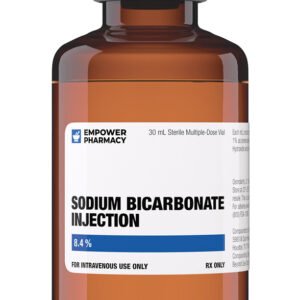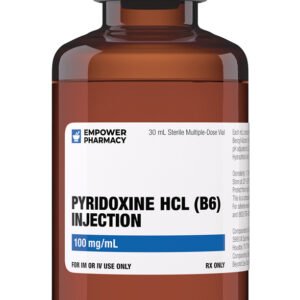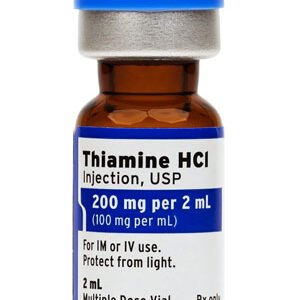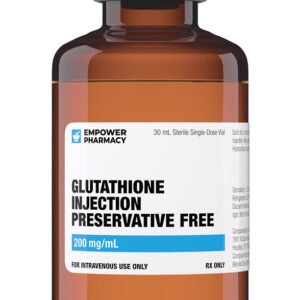Description
General Information
Selenium is an essential nonmetallic element which is chemically related to sulfur. It is found in rock, shale, sandstone, limestone, coal, soil, surface water, and vegetation. Foods which contain significant amounts of selenium include meat, poultry, grains, and seafood. Selenium concentrations are relatively high in many of the soils of the United States, especially the western states. Although selenium deficiency is rare in the United States, selenium deficiency has been linked to diseases such as Keshan disease, a juvenile cardiomyopathy due to very low dietary selenium intake and Kashin-Beck disease, an endemic osteoarthritis. Low selenium body concentrations are also associated with prematurity, acute illness, and prolonged total parenteral nutrition (TPN) therapy. Symptoms of selenium deficiency include muscle weakness, myalgia, myositis, increased erythrocyte fragility, pancreatic degeneration, macrocytosis, and pseudoalbinism. Both epidemiological and laboratory data suggest that selenium may protect against overall cancer risk, however, data from controlled trials supporting the role of selenium in preventing cancer are insufficient or non-existent. In the Selenium and Vitamin E Cancer Prevention Trial (SELECT), which was a long-term, multi-center, placebo-controlled trial, more than 35,000 men >= 50 years of age were randomized to receive either selenium 200 mcg and vitamin E 400 mg, selenium and placebo, vitamin E and placebo, or placebo. The trial was stopped after about 7 years when interim results found that neither drug prevented prostate cancer. Further, 2 preliminary trends of vitamin E slightly increasing the risk of prostate cancer and selenium slightly increasing the risk of diabetes were found. Follow-up data collection is ongoing. Selenium is commercially available as an oral tablet (elemental selenium) or as an injection (selenious acid). Recommended daily allowances (RDA) for selenium have been defined. Selenium supplements have been available since before 1938.
Mechanisms of Action
Selenium functions as a cofactor for the enzyme glutathione peroxidase, a major intracellular antioxidant. Glutathione peroxidase utilizes glutathione as a proton donor to catalyze the reduction of hydrogen peroxide and organic hydroperoxides to nontoxic products, thereby protecting cells from peroxide-induced damage. The tissue peroxidase lowering actions of selenium are similar to those of vitamin E.
Pharmacokinetics
Selenium is administered orally as tablets or intravenously as a component of total parenteral nutrition solutions. Once in the systemic circulation, the highest concentrations of selenium are found in the kidney, followed by the liver, muscle, and skin. Muscle contains almost 50% of the total body selenium. Other storage sites include erythrocytes, spleen, heart, nails, tooth enamel, testes, and sperm. Total body content of selenium varies with the relative amount found in the soil, and the subsequent concentration of selenium into the food supply. In North America, the body content is about 13—20 mg for adults whereas in New Zealand the body content is about 3—6 mg. Excretion occurs primarily in the urine with a minor amount excreted in the feces.
Route-Specific Pharmacokinetics:
Oral Route: Following oral administration, selenium is rapidly absorbed from the gastrointestinal tract.
Contraindications / Precautions
Selenium supplements should be used cautiously in patients with GI disease or renal impairment. These conditions may cause high levels of selenium; dosage reductions may be necessary.
In animal models, selenium has been shown to improve glucose metabolism. However, a randomized clinical trial indicates that selenium 200 mcg/day is associated with an increased risk for developing type 2 diabetes mellitus (HR 1.55, 95% CI 1.03—2.33). The results of this trial are derived from a secondary analysis of the Nutritional Prevention of Cancer (NPC) trial designed to determine the effects of selenium supplementation on preventing nonmelanoma skin cancer. In this trial, 1202 patients randomized to selenium (n=600) or placebo (n=602) and followed for an average of 7.7 years self-reported a diagnosis of diabetes mellitus. The patients were primarily non-Hispanic white (98.4%), had a mean age of 63 years, and lived in areas of the US with low rates of selenium consumption. Although the diagnosis of diabetes was confirmed by medical record review in 92% of the patients reporting a positive diagnosis, the results of this trial should be validated using a broader patient population and a more objective mechanism for diagnosing diabetes. Regardless, because of the serious nature of diabetes mellitus, it may be prudent to advise patients with or without diabetes mellitus to use selenium with caution until more information becomes available.
Administration of the recommended dose of selenium injection or use of oral selenium within the recommended dietary daily intakes for a pregnant female is not expected to cause major birth defects, miscarriage, or adverse maternal or fetal outcomes. Animal reproduction studies have not been conducted with selenium injection. The use of selenium in excess of the recommended dietary allowance during normal pregnancy should be avoided unless, in the judgment of the physician, potential benefits in a specific, unique case outweigh the significant hazards involved.
Selenium is present in human milk as a natural component. Administration of the recommended dose of selenium injection or use of oral selenium within the recommended daily dietary intake for lactating women is not expected to cause harm to a breastfed infant. However, there are no data available on the effects of selenium on milk production. If a breastfeeding infant experiences an adverse effect related to a maternally administered drug, healthcare providers are encouraged to report the adverse effect to the FDA.
Some commercial injections of selenium are contraindicated in premature neonates because these products contain benzyl alcohol. Administration of benzyl alcohol to neonates can result in ‘gasping syndrome,’ which is a potentially fatal condition characterized by metabolic acidosis and CNS, respiratory, circulatory, and renal dysfunction. These injections should also not be used in patients with benzyl alcohol hypersensitivity.
Intravenous administration of undiluted selenium into a peripheral vein is contraindicated due to the risk of infusion phlebitis.
Pregnancy
Administration of the recommended dose of selenium injection or use of oral selenium within the recommended dietary daily intakes for a pregnant female is not expected to cause major birth defects, miscarriage, or adverse maternal or fetal outcomes. Animal reproduction studies have not been conducted with selenium injection. The use of selenium in excess of the recommended dietary allowance during normal pregnancy should be avoided unless, in the judgment of the physician, potential benefits in a specific, unique case outweigh the significant hazards involved.
Breastfeeding
Selenium is present in human milk as a natural component. Administration of the recommended dose of selenium injection or use of oral selenium within the recommended daily dietary intake for lactating women is not expected to cause harm to a breastfed infant. However, there are no data available on the effects of selenium on milk production. If a breastfeeding infant experiences an adverse effect related to a maternally administered drug, healthcare providers are encouraged to report the adverse effect to the FDA.
Adverse Reactions / Side Effects
At recommended daily dosages, selenium has no adverse effects. However, selenium toxicity results in alopecia, chronic dermatitis, diarrhea, excessive fatigue, fingernail weakening, garlic odor of breath (halitosis) and sweat, irritability, metallic taste, nausea, and vomiting. Thrombocytopenia and moderate hepatorenal dysfunction could also be seen with toxicity.
In animal models, selenium has been shown to improve glucose metabolism. However, a randomized clinical trial indicates that selenium 200 mcg/day is associated with an increased risk for developing type 2 diabetes mellitus (HR 1.55, 95% CI 1.03—2.33). The results of this trial are derived from a secondary analysis of the Nutritional Prevention of Cancer (NPC) trial designed to determine the effects of selenium supplementation on preventing nonmelanoma skin cancer. In this trial, 1202 patients randomized to selenium (n=600) or placebo (n=602) and followed for an average of 7.7 years self-reported a diagnosis of diabetes mellitus. The patients were primarily non-Hispanic white (98.4%), had a mean age of 63 years, and lived in areas of the US with low rates of selenium consumption. Although the diagnosis of diabetes was confirmed by medical record review in 92% of the patients reporting a positive diagnosis, the results of this trial should be validated using a broader patient population and a more objective mechanism for diagnosing diabetes.
Storage
Store this medication at 68°F to 77°F (20°C to 25°C) and away from heat, moisture and light. Keep all medicine out of the reach of children. Throw away any unused medicine after the beyond use date. Do not flush unused medications or pour down a sink or drain.
Refrences
1National Cancer Institute news release. October 27, 2008. Review of prostate cancer prevention study shows no benefit for use of selenium and vitamin E supplements. Accessed November 17, 2008. Available on the World Wide Web at www.cancer.gov/newscenter/pressreleases/SELECTresults2008.
2Stranges S, Marshall JR, Natarajan R, et al. Effects of long-term selenium supplementation on the incidence of type 2 diabetes. Ann Intern Med 2007;147:217-23.
3Standing Committee on the Scientific Evaluation of Dietary Reference Intakes – Panel on Dietary Reference Intakes for Vitamin C, Vitamin E, Selenium, and Carotenoids and the Subcommittee on Upper Reference Levels of Nutrients,Food and Nutrition Board, Institute of Medicine (IOM). Dietary Reference Intakes for Vitamin C, Vitamin E, Selenium, and Carotenoids. 2000.The National Academy of Sciences Press, Washington DC.
4Selenious acid injection package insert. Shirley, NY: American Regent, Inc.; 2020 Oct
5Lawrence RA. Chapter 9: Diet and dietary supplements for the mother and infant. In: Breastfeeding- A Guide for the Medical Profession. 5th ed. St. Louis MO: Mosby, Inc.; 1999.
6Schrauzer GN. Selenomethionine: a review of its nutritional significance, metabolism and toxicity. J Nutr 2000;130:1653-6.
7Food and Nutrition Board, Institute of Medicine. Dietary Reference Intakes for Vitamin C, Vitamin E, Selenium, and Carotenoids. Washington, DC: National Academy Press, 2000. Available at: http://www.nap.edu/books/0309069351/html/.






Reviews
There are no reviews yet.